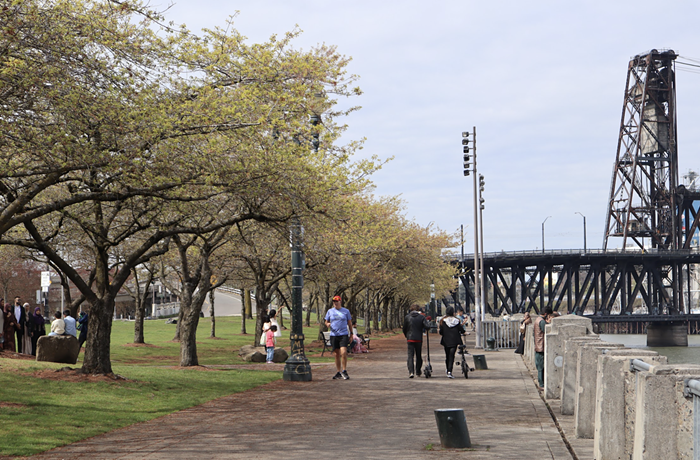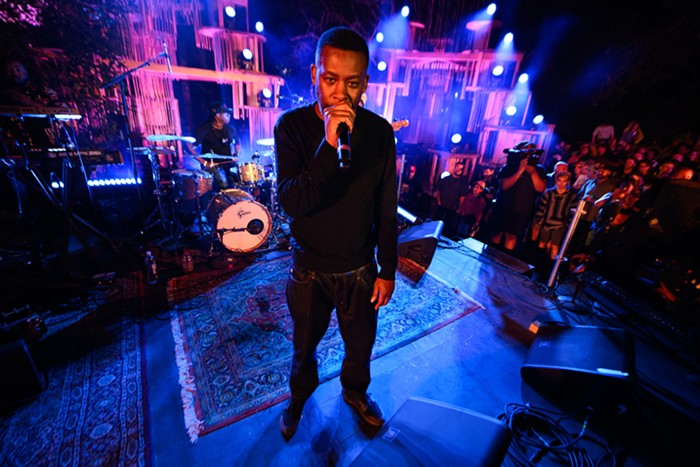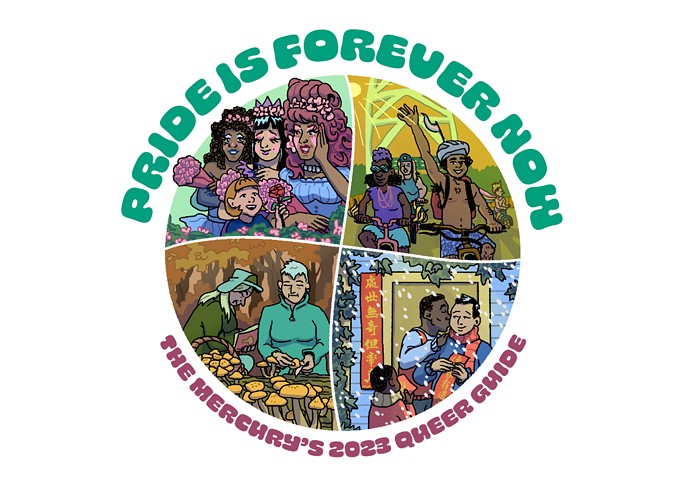Cheryl Comstock's canvases at Greg Kucera are stretched over wooden disks whose shapes suggest embroidery hoops. Round shapes abound: the world, the moon, a dog jumping through a fiery hoop. The titles contain the word "time," and of course the circles reference this. Time is manifest in the intense effort in each work, from the detailed painting to the acrylic paint mixed with modeling paste and piped around the edges like cake icing.
Her icons trot along the continuum from the insipid to the loaded--kittens wearing aprons, puppies cavorting, skeletons, bleeding hearts, thorny branches. Painting styles are freely mixed: stylized children's-book-style illustrations, fully rendered figures, parts painted in the bright, stark colors of Mexican retablos.
To talk about these paintings in terms of women's work is to invite a lot of tired baggage to the table, but Comstock seems to slyly delight in the argument. In Eight Days a Week, an industrious ducky attacks her chores in each of seven panels, and in the eighth, falls exhausted or perhaps dead into a bed of straw. Art should never be only commentary, but Comstock mixes it so aptly and cleverly with craft that the two are inseparable.
WENDY HANSON'S WORK at Howard House provokes similar questions, but her medium couldn't be further from traditional. She painstakingly sews together rose petals in various stages of decay, creating delicate patchwork wall pieces protected by specimen boxes, as well as three tremendous sewn-together spheres. This work brings to mind tasks of mythological proportions: Hercules clean-ing out the stables of King Augeas, or more appropriately, Penelope weaving by day, and unraveling by night.
Once you get past the sheer difficulty involved in the work's creation, its subtleties rise to the surface. The petals, in their various shades of red and pink and faded yellow, overwhelmingly recall skin, delicate and translucent. Out of these tender pieces, Hanson has created quite regular surfaces, like a quilt, or a surveyor's map. In a few works, a woman's body has been lightly figured onto the petals with watercolor, but the figure is mostly hidden, almost absorbed by the surface.
The feeling these works evoke is that of control exerted over nature, a regular order imposed on an organic and obviously difficult material. The title of her show, Forged Symmetries, suggests order laboriously won. There is meditation implicit here, and it is an ongoing meditation, since as the petals age and fade, and the vascular systems become more pronounced, the work changes too. Hanson may have exerted some control over nature, but time will, in the end, exert control over the work.
IN CONTRAST TO THE KNOTTY philosophy offered by Comstock and Hanson, there is Sheila Klein's exhibition. On First Thursday, I watched people walk into Esther Claypool with their serious gallery faces on, and walk out beaming. Of her wall hangings (which the artist, interestingly, calls "paintings"), Klein said, "I was thinking of Mark Rothko when I composed them. Though he would roll in his grave if he knew." But you can see what she means: in the layered collage of clashing fabrics, the floating panels of color, the shock that slows into a deeper meditative state. Klein wildly mixes her fabrics: plaids, flowers, net, fringe, harlequin. Craft is secondary to a kind of abandon, an intuitive mix-and-match. The work is so friendly that you might miss its smartness, its overall aesthetic--or it could be that it's all part of the mix.
Happily, in the end, the only thing that ties together the work of these three artists is a choice of technique, one that points back to the same root, but has resulted in three utterly different kinds of work. Art is work, period.












